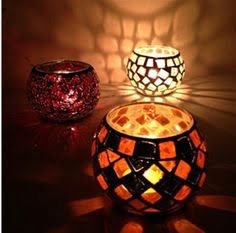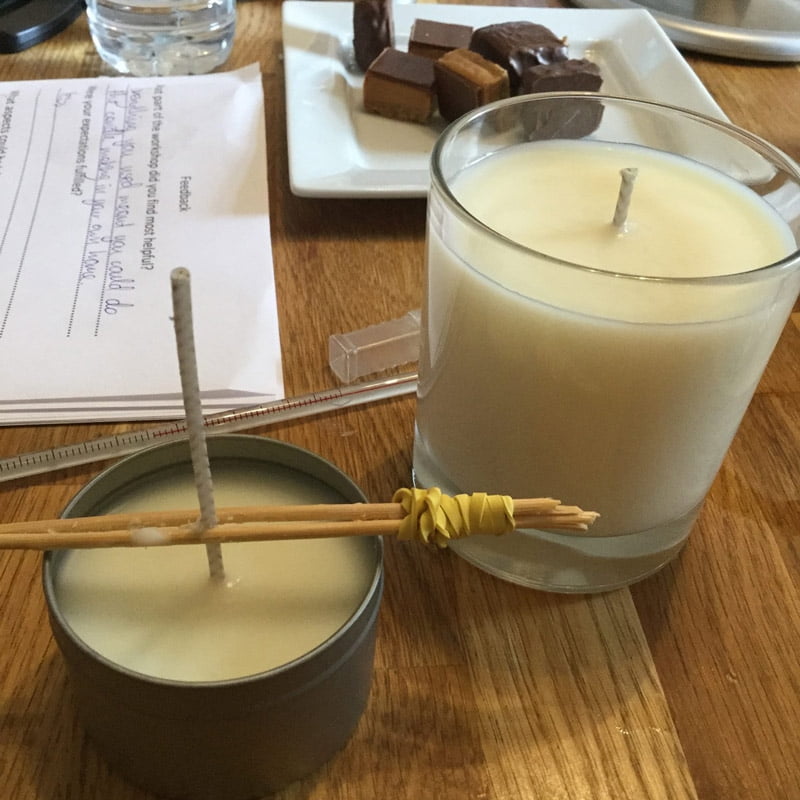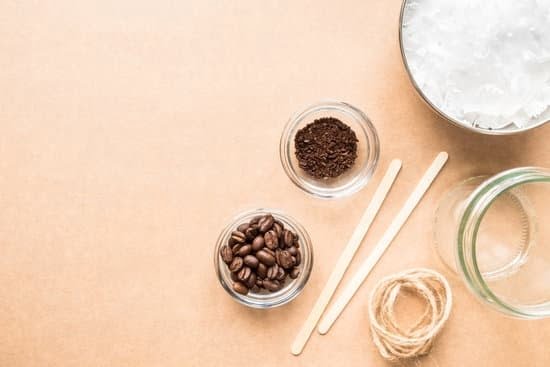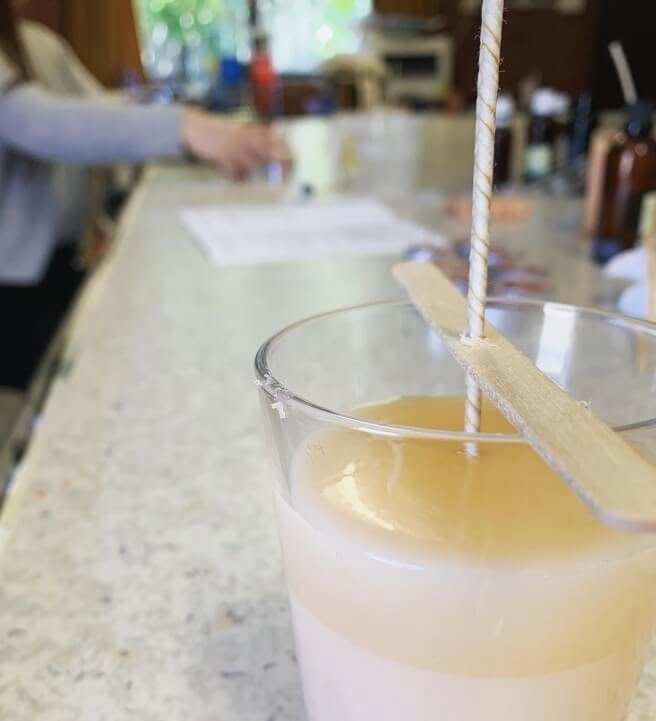Candle making is both an art and a science, with one crucial element that adds charm and allure: scents. The right scent can transform a simple candle into a sensory experience, evoking feelings of relaxation, romance, or even nostalgia. Whether you are a professional candle maker or simply enjoy making candles as a hobby, selecting the right scent is essential to creating beautifully fragranced candles.
In this comprehensive article, we will delve into the world of candle making scents, exploring the various aspects that go into choosing the perfect fragrance for your candles. From understanding fragrance notes to exploring popular scents and unique combinations, we will cover it all. We will also discuss how different scents can be used for specific occasions and themes, as well as offer tips for proper scent selection based on factors such as candle type, wax compatibility, and personal preferences.
One of the key elements in selecting the right scent for your candle is understanding fragrance notes. Similar to perfumes, each candle fragrance consists of top notes, middle notes, and base notes that work together to create a balanced scent profile. We will explain these different notes in detail and discuss how they can be combined to create captivating aromas.
By the end of this article, you will have a thorough understanding of how to choose scents for your candle making projects. Whether you prefer herbal and botanical scents for their natural aromatherapy benefits or wish to explore unconventional combinations for unique creations, we have got you covered.
So join us on this journey into the art and science of candle making scents, as we help you find your signature scent and create beautifully fragranced candles that fill any space with warmth and allure.
Importance of Selecting the Right Scent
In the art and science of candle making, selecting the right scent is of utmost importance. The scent of a candle sets the mood and enhances the ambience of any space, whether it’s a relaxing spa-like atmosphere or a cozy romantic setting. The fragrance you choose can have a significant impact on how people perceive and experience the candles you create.
When selecting a scent for your candles, it’s essential to consider the purpose and intended use of the candle. Different scents evoke different emotions and feelings. For example, lavender is known for its soothing properties, making it perfect for creating a calming atmosphere in bedrooms or bathrooms. On the other hand, citrus scents like lemon or orange can uplift moods and energize spaces, making them ideal for living areas or home offices.
One way to ensure that you select the right scent is by understanding fragrance notes. Fragrances generally consist of three layers: top notes, middle notes, and base notes. Top notes are the scents that are immediately noticeable when you first smell a fragrance. They tend to be light and volatile but evaporate quickly.
Middle notes are more robust and become apparent after the top notes fade away. Base notes are heavier scents that linger for longer periods of time. By incorporating different combinations of these fragrance notes into your candle recipes, you can achieve well-balanced scent profiles that evolve over time as the candle burns.
| Scent | Description |
|---|---|
| Vanilla | A warm and comforting scent that promotes relaxation. |
| Lavender | A floral fragrance known for its calming properties. |
| Sandalwood | An earthy and woody scent that is often associated with meditation and spiritual practices. |
Choosing the right scent for your candles not only enhances the overall experience for those who enjoy them but also adds a personal touch to your creations. Selecting scents that complement different occasions and seasonal themes can make your candles perfect for specific celebrations, whether it’s a festive holiday gathering or a summer garden party.
By considering factors such as candle type, wax compatibility, and personal preferences, you can create candles that are not only visually appealing but also carry scents that evoke the desired emotions and atmosphere.
Remember, the world of candle making allows for experimentation and creativity. Don’t be afraid to explore unconventional candle scents or blend different fragrances to create unique combinations. This can turn your candle-making process into an exciting adventure where you have the freedom to customize scent profiles according to your imagination.
Understanding Fragrance Notes
When it comes to creating beautifully fragranced candles, understanding fragrance notes is essential. Fragrance notes are the individual components of a scent that come together to create a complete aroma. They are categorized into three main categories – top notes, middle notes, and base notes – each playing a crucial role in achieving a balanced and harmonious scent profile.
1. Top Notes:
Top notes are the initial scents that you experience when you first smell a candle or any other fragrance product. They are typically light, fresh, and vibrant aromas that catch your attention immediately but tend to fade quickly. These scents provide the first impression of your candle’s fragrance and play an important role in enticing your senses.
Common examples of top notes include citrus fruits like lemon or bergamot, as well as herbal scents like mint or basil. These fragrances give your candles an invigorating and uplifting start. It’s important to note that top notes evaporate quickly, so they may not be as noticeable after burning the candle for some time.
2. Middle Notes:
Also known as heart notes or body notes, middle notes are the scents that become apparent once the top notes have evaporated. They make up the backbone of the fragrance by providing depth and complexity to your candle’s scent profile. Middle notes have more staying power than top notes, allowing them to last throughout the burning process.
Middle note fragrances can range from floral scents like rose or lavender to fruity aromas like apple or blackberry. These warm and inviting fragrances create a pleasant and relaxing ambiance for any space.
3. Base Notes:
Base notes are the foundation of your candle’s scent profile and provide longevity to its fragrance. These scents take longer to develop but have excellent staying power even after burning for extended periods. Base notes contribute richness, warmth, and depth to your candle, helping to create a well-rounded scent experience.
Common examples of base notes include woody scents like sandalwood or cedar, as well as musky fragrances like vanilla or patchouli. These aromas add complexity and sophistication to your candles, making them more intriguing and captivating.
When selecting fragrance oils for candle making, it’s important to consider the balance between these three types of notes. Aim for a harmonious combination that transitions smoothly from one note to another throughout the burning process. By understanding fragrance notes and how they contribute to the overall scent profile of your candles, you can create beautifully fragranced creations that delight the senses.
Popular Candle Making Scents
When it comes to candle making, the scent you choose can make all the difference in creating a memorable and pleasing experience. There is a wide variety of scents available for candle making, each with its own unique characteristics and appeal. In this section, we will provide a comprehensive examination of the most loved fragrances for candle making.
One popular category of candle scents is floral fragrances. Floral scents such as rose, lavender, and jasmine are well-loved for their ability to create a soothing and relaxing atmosphere. These scents are often associated with beauty and tranquility, making them perfect for creating a calming ambiance in bedrooms or bathrooms. Additionally, floral scents can also evoke feelings of romance and elegance, making them ideal for special occasions or intimate gatherings.
Another widely popular category of candle scents is fruity fragrances. Fruity scents like apple, citrus, and berry offer a fresh and vibrant aroma that can uplift any space. These scents are often chosen for their invigorating qualities, which can be particularly refreshing in kitchens or living rooms. Fruity fragrances bring a sense of energy and cheerfulness to any environment, making them perfect for brightening up your day or setting a lively mood during gatherings.
Lastly, we have the warm and cozy scents that are beloved by many candle enthusiasts. These scents evoke feelings of comfort and relaxation, making them perfect for creating a cozy atmosphere on chilly evenings or during the winter season. Popular warm fragrances include vanilla, cinnamon, and amber. The rich and comforting aroma of these scents can instantly transform your space into a welcoming retreat.
As you explore different fragrance options for your candles, consider experimenting with combinations of different notes to create unique scent profiles that suit your personal preferences or special occasions. Whether it’s blending floral notes with fruity undertones or combining warm scents with a touch of spice, the possibilities are endless.
Remember to always consider the mood and ambiance you wish to create when selecting your candle scents and have fun exploring the world of fragrance in your candle-making journey.
The Power of Herbal and Botanical Scents
Introduction
The power of herbal and botanical scents in candle making cannot be underestimated. These natural fragrances have been used for centuries for their therapeutic properties and can create a calming and soothing atmosphere in any space. In this section, we will explore how herbal and botanical scents can enhance the mood and ambiance of your candles, as well as the benefits of using these natural aromatherapy ingredients.
Harnessing the Benefits of Natural Aromatherapy
When it comes to selecting scents for your candles, incorporating herbal and botanical fragrances can bring numerous benefits to both body and mind. Aromatherapy is the practice of using natural oils extracted from plants to promote physical and psychological well-being. By infusing your candles with these essential oils, you can take advantage of the healing properties they offer.
The Lavender Effect
Lavender is a classic example of an herbal scent that is widely loved in candle making. It is known for its calming properties, which can help reduce stress, anxiety, and promote relaxation. The aroma of lavender has been shown to improve sleep quality as well, making it an excellent choice for candles meant for the bedroom or relaxation areas.
The Uplifting Power of Citrus
Citrus scents such as lemon, orange, and grapefruit are invigorating and refreshing. These fragrances have a revitalizing effect on the mind, helping to boost mood and increase energy levels. Consider adding citrus essential oils to candles meant for study spaces or areas where you want to create an uplifting atmosphere.
Peppermint for Focus
If you’re looking to create a candle that aids concentration and mental clarity, peppermint is an ideal choice. The fresh aroma of peppermint has been shown to stimulate alertness while improving memory retention. Adding peppermint essential oil to your candles can help create a focused environment in workspaces or whenever you need a mental boost.
Incorporating herbal and botanical scents in your candles allows you to enjoy the benefits of natural aromatherapy. Whether you’re looking to relax, uplift your mood, or enhance focus, there is an array of options to choose from. Experiment with different combinations and discover the power of these natural fragrances in creating beautifully scented candles that promote overall well-being.
Unconventional Candle Scents
Candle making is not only an art but also a science, allowing for endless experimentation with scent combinations. While classic scents like lavender and vanilla are always popular choices, adventurous candle makers may want to step outside the box and explore unique fragrance combinations. This section will delve into the world of unconventional candle scents, providing inspiration for those willing to explore new aromatic possibilities.
- Spicy and Citrusy Delights: For a bold and invigorating scent experience, consider combining spicy and citrus notes. A blend of hot cinnamon, zesty orange, and refreshing bergamot can create a lively atmosphere in any room. This combination works well in the kitchen or dining area, infusing the space with warmth and energy.
- Floral Meets Earthy: Why settle for just one fragrance family when you can have two? Combine floral notes like rose or jasmine with earthy elements such as patchouli or vetiver for a unique olfactory experience. This combination strikes a harmonious balance between femininity and grounding aromas, perfect for creating a meditative atmosphere in your home office or bedroom.
- Sweet and Savory Surprises: Who says candles can’t take inspiration from the kitchen? Consider creating fragrances that mimic your favorite desserts or savory dishes. Caramelized sugar paired with a hint of smoky bacon creates an unexpectedly delightful aroma that will make any space feel cozy and comforting.
When experimenting with unusual scent combinations, it’s essential to start small and test each blend before producing larger batches of candles. Keep detailed notes about the ratios of each fragrance used so you can replicate successful blends later on.
So go ahead – let your imagination run wild. Unconventional candle scents offer an opportunity to create truly one-of-a-kind fragrances that reflect your unique personality as a candle maker. Embrace the adventure of exploring new scent combinations and surprise yourself with delightful olfactory experiences in every room.
Choosing Scents for Different Occasions
When it comes to candle making, selecting the right scent can significantly enhance the atmosphere and set the perfect mood for different occasions. Whether you are planning a romantic dinner, hosting a festive holiday gathering, or simply looking to create a serene ambiance for relaxation, choosing scents that match special celebrations and seasonal themes can make your candles truly memorable.
For special celebrations such as birthdays or anniversaries, you may want to consider using scents that are associated with joy and happiness. A popular choice for these occasions is the scent of vanilla, known for its sweet and comforting aroma. Vanilla candles create an inviting environment and are often used to create a warm and cozy atmosphere during celebratory events.
Seasonal themes also play an important role in selecting candle scents. For example, during the holiday season, fragrances like cinnamon, pine, and gingerbread are commonly used to capture the festive spirit. These scents evoke memories of winter nights by the fireplace and bring a sense of warmth and cheerfulness to any space.
| Occasion | Suggested Scents |
|---|---|
| Romantic Dinner | Rose, jasmine, lavender |
| Holiday Gathering | Pine, cinnamon, gingerbread |
| Birthday Party | Vanilla, cake batter, citrus |
| Festive Season (non-religious) | Apple pie, cranberry, peppermint |
| Spring/Easter | Lily of the valley, fresh linen, rain |
Remember that personal preferences and the theme of the occasion are crucial factors when choosing candle scents. Experimenting with different fragrances and combinations can help you create a truly unique and customized experience. By selecting scents that match the mood and resonate with the season or celebration, you can elevate your candle making to a whole new level.
Tips for Proper Scent Selection
When it comes to selecting the right scent for candle making, there are several factors to consider. These factors include the type of candle, wax compatibility, and personal preferences. Each of these elements plays a crucial role in ensuring that the fragrance is not only pleasing to the nose but also performs well in the finished candle.
Firstly, it’s important to consider the type of candle you are making. Different types of candles have different scent requirements. For example, soy wax candles tend to hold scent better than traditional paraffin wax candles. Beeswax candles also have their own unique scent profile that should be taken into account when selecting fragrances. Understanding how each type of wax interacts with scents will help ensure that you choose a fragrance that will perform optimally in your particular candle.
Wax compatibility is another important consideration when selecting a fragrance for candle making. Some fragrances may perform well in one type of wax but not in others. It’s important to research and test different fragrances to determine which ones work best with your chosen wax. This will help ensure that your candles have a consistent and strong scent throw.
Lastly, personal preferences play a significant role in selecting scents for candle making. Everyone has different tastes and preferences when it comes to fragrance profiles. Consider what kind of scents you personally enjoy and think about your target audience if you’re creating candles for sale or as gifts. Pay attention to trends and popular fragrance families, such as floral, fruity, or woody scents, but ultimately go with scents that resonate with you or your intended recipients.
| Factors | Considerations |
|---|---|
| Type of Candle | Research scent requirements for different candle types |
| Wax Compatibility | Test fragrances to find those that work well with your chosen wax |
| Personal Preferences | Select scents that resonate with you or your target audience |
Fragrance Oil vs. Essential Oil
When it comes to selecting the right type of scent for your candles, one of the biggest debates in the candle making community is between fragrance oil and essential oil. Both options have their own unique benefits and characteristics, so it’s important to understand the differences between them before making a decision.
Fragrance Oil
Fragrance oils are synthetic compounds that are specifically formulated to mimic a particular scent. They are created using a combination of aroma chemicals and natural ingredients, resulting in a wide array of scents that are not found in nature.
One of the main advantages of using fragrance oils is the sheer variety available – there are countless options to choose from, ranging from traditional floral scents to more exotic combinations. Fragrance oils also tend to be stronger and longer-lasting compared to essential oils, meaning that your candles will release a more potent scent when burned.
Essential Oil
On the other hand, essential oils are derived directly from plants through processes like distillation or cold-pressing. They contain the natural aromatic compounds found in plant materials, which give them their distinct scents. Essential oils are known for their therapeutic properties, as they often possess various aromatherapy benefits depending on the plant they come from.
Unlike fragrance oils, essential oils provide a more subtle and nuanced scent experience. While they may not have the same wide variety as fragrance oils, many candle makers prefer them for their natural and holistic qualities.
Choosing the Right Type of Scent
When deciding between fragrance oil and essential oil for your candles, it ultimately comes down to personal preference and your specific goals for your candles. If you prioritize having a wide range of scents to choose from or want a stronger scent throw, fragrance oils may be the better option for you. On the other hand, if you value natural ingredients or want to incorporate aromatherapy benefits into your candles, essential oils would be the more suitable choice.
It’s also worth noting that some candle makers choose to blend fragrance oils and essential oils together to create their own unique scent combinations. This allows for even more creativity and customization in scent selection. Regardless of your choice, it is important to properly research and source your scents from reputable suppliers to ensure quality and safety in your candle making process.
Experimenting with Blending Scents
Blending different scents together in candle making allows for endless possibilities and the opportunity to create unique fragrance combinations. By experimenting with blending scents, candle makers can unleash their creativity and develop custom fragrances that are truly one-of-a-kind. This section will provide tips and techniques for successfully blending scents, allowing candle makers to customize their creations and stand out from the crowd.
The Art of Scent Blending
Blending scents is both an art and a science. It requires careful consideration of fragrance notes, intensity levels, and how different aromas interact with each other. When starting with scent blending, it is recommended to begin with two or three scents that complement each other well. By choosing fragrances within the same fragrance family or those that share similar notes, it is easier to achieve a harmonious blend.
Understanding Scent Intensity
When blending scents, it is important to consider the intensity levels of each individual fragrance. Some fragrances may be more dominant than others, so finding a balance is crucial. One approach is to use a “main” scent as the base and then add smaller amounts of complementary scents as accents. This can help create a well-rounded blend where no single scent overwhelms the others.
Additionally, taking note of the volatility of different fragrance oils can be helpful when blending scents. Some oils have stronger top notes that dissipate faster, while others have deeper base notes that linger longer. By understanding these characteristics, candle makers can design fragrances that evolve over time as the candle burns.
Record Keeping and Testing
As you experiment with blending scents, it is essential to keep detailed records of your recipes and measurements. This will allow you to recreate successful blends in the future or make adjustments if needed. Performing small test batches before committing to larger quantities can also help ensure the desired outcome. Remember to label each test batch with the specific blend used, as well as any notes regarding scent strength or performance.
Experimenting with blending scents is an exciting part of candle making that allows for endless creativity and customization. By understanding the art of scent blending, considering scent intensity levels, and keeping detailed records and testing, candle makers can create beautifully fragranced candles that are truly unique to their brand. So go ahead and unleash your imagination by trying out different combinations and discovering your signature scent.
Tips for Maintaining Consistency
Maintaining consistency in scent intensity and longevity is crucial for candle makers to ensure that each batch of candles produces the same quality and fragrance experience. Here are some helpful tips to achieve this:
- Accurate Measurement: Consistency starts with precise measurement of fragrance oils or essential oils. Use a digital scale to measure the exact amount required for each candle batch, following the recommended usage rate provided by the supplier. Using too much oil can lead to overpowering scents, while using too little may result in weak fragrances.
- Thorough Mixing: Properly mixing the fragrance oils or essential oils into the melted wax is essential for consistent scent distribution. Ensure that the oil is thoroughly blended into the wax, whether by stirring vigorously or using a mixer designed for candle making.
- Testing and Adjusting: Before producing large batches of candles, it is important to conduct small test batches to evaluate the scent intensity and longevity. This will allow you to make any necessary adjustments before scaling up production.
- Choosing Quality Fragrance Oils or Essential Oils: Opting for high-quality fragrance oils or essential oils from reputable suppliers is key to achieving consistent scents. Cheaper options may lack potency or fluctuate in scent profiles from one batch to another, resulting in inconsistent fragrance experiences.
- Storing Fragrance Oils Properly: Fragrance oils can degrade over time due to exposure to heat, light, and air. To maintain their quality and consistency, store them in dark glass bottles in a cool, dry place away from direct sunlight and extreme temperatures.
- Labeling and Batch Tracking: It is important to label each batch of candles with the specific fragrance used and keep track of all ingredients used in case adjustments or reproductions need to be made later on.
By following these tips, candle makers can ensure that every candle they produce remains consistent in scent intensity and longevity, allowing customers to enjoy a reliable fragrance experience every time.
Conclusion
In conclusion, selecting the right scent for candle making is essential in creating beautifully fragranced candles that enhance the mood and ambiance of any space. Throughout this article, we have explored the art and science of candle making scents, understanding fragrance notes, popular scents, and the power of herbal and botanical scents.
One important aspect to consider when choosing a scent is the occasion or theme you are trying to match. By selecting fragrances that align with special celebrations or seasonal themes, you can create a more immersive experience for your customers or loved ones. Additionally, considering factors such as candle type, wax compatibility, and personal preferences can greatly contribute to finding the perfect scent for your candles.
Furthermore, experimenting with blending various scents is a wonderful way to unleash your creativity and customize unique fragrance combinations that reflect your individual style. Whether it’s combining different top notes to create a refreshing blend or mixing base notes for a warm and comforting aroma, the possibilities are endless.
Lastly, maintaining consistency in scent intensity and longevity is crucial for ensuring customer satisfaction with each batch of candles. By carefully measuring fragrance oils or essential oils and following proper candle making techniques, you can achieve a consistent result every time.
Ultimately, finding your signature scent is all about exploring different scents, experimenting with unique combinations, and trusting your intuition. With a little bit of creativity and knowledge about fragrance profiles and compatibility, you can create beautifully fragranced candles that bring joy and serenity into any space. So go ahead and embark on your candle making journey – may you find your perfect scent.
Frequently Asked Questions
What kind of fragrance do you use for candle making?
The type of fragrance used for candle making can vary depending on personal preference and the desired scent profile. Fragrance oils are commonly used as they are specifically formulated for candle making and often have a stronger scent throw compared to other options.
These fragrance oils come in a wide range of scents, including floral, fruity, woody, and spicy aromas. Additionally, some candle makers may choose to use essential oils or natural extracts to create their own unique blends.
What can I use to add scent to candle wax?
There are different options available for adding scent to candle wax. One popular choice is fragrance oils, which are highly concentrated synthetic scented liquids specifically designed for candle making. These fragrance oils can be mixed directly into the melted wax before pouring it into the molds or containers.
Another option is to use essential oils, which are extracted from natural plant materials. However, it’s important to note that essential oils should be used sparingly as they can alter the burning properties of the wax if added in excessive amounts.
What essential oils are safe to use in candles?
When selecting essential oils for candle making, it’s important to consider safety precautions and guidelines. Generally speaking, most pure essential oils can be used in candles with proper dilution. Some popular choices include lavender, lemon, eucalyptus, peppermint, vanilla, and cedarwood essential oils.
However, there are a few essential oils that may not be suitable due to their high flashpoints or potential skin irritants such as cinnamon bark oil or clove bud oil. It’s always recommended to consult reliable resources or refer to safety data sheets provided by suppliers when determining safe usage levels of specific essential oils in candles.

Welcome to my candle making blog! In this blog, I will be sharing my tips and tricks for making candles. I will also be sharing some of my favorite recipes.





